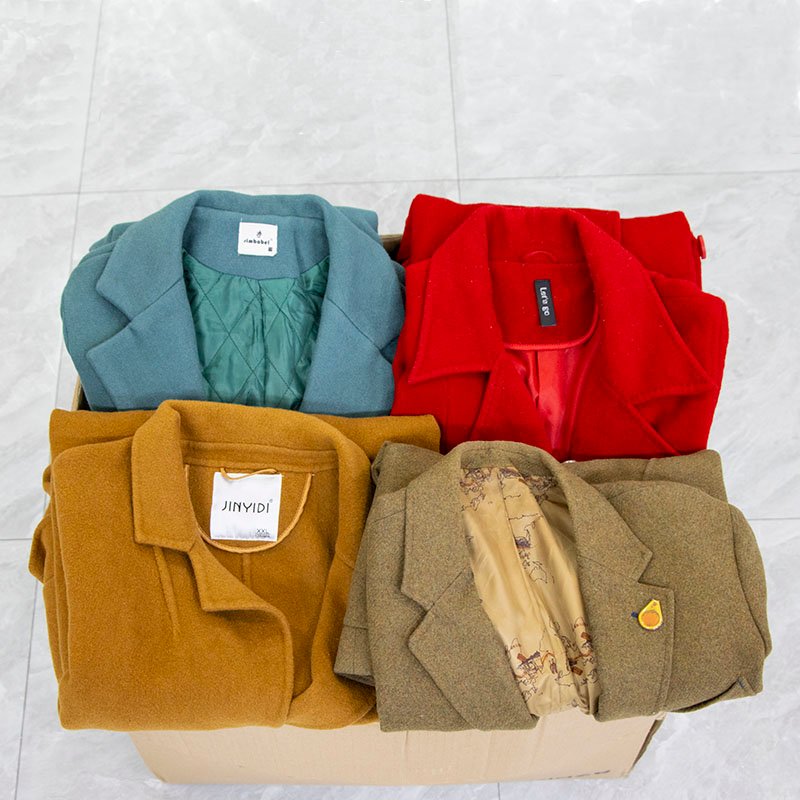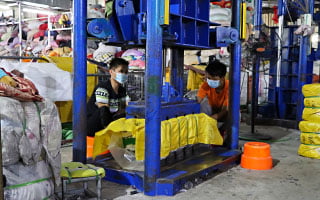Introduction
In recent years, as consumers become increasingly aware of the environmental and social impact of fast fashion, there has been a growing interest in second hand clothing as a viable alternative.
But what exactly is the production process behind second hand clothing, and how does it contribute to a more sustainable fashion ecosystem? This article reveals the production process of second hand clothing, from collection and sorting to reuse and recycling.

Collection and Classification For Second Hand Clothes
The production process of second hand clothing begins with the collection of garments from various sources. These sources may include donations from individuals, clothing drives organized by charities, or the purchase of bulk items from thrift stores and wholesalers. Once collected, the garments are sorted and classified according to their condition, style, size, and seasonality. This initial sorting process helps streamline subsequent stages of production and ensures efficient handling of the inventory.

Evaluation and Sorting For Second Hand Clothes
After classification, the garments undergo a thorough evaluation to determine their suitability for resale, donation, recycling, or disposal. Items in good condition with no significant flaws or damage may be earmarked for resale or donation. These garments are further sorted into categories based on factors such as brand, style, and market demand. Meanwhile, items that are damaged, stained, or outdated may be earmarked for recycling or disposal. The goal is to maximize the value and utility of each garment while minimizing waste and environmental impact.

Inspection and Weighing For Second Hand Clothes
Following evaluation and sorting, the garments undergo a final inspection to ensure quality and integrity. Once deemed suitable for resale, the garments are weighed to determine their individual and collective value. Weighing helps streamline inventory management and pricing strategies, ensuring transparency and accuracy in the pricing process.

Sorting and Packing For Second Hand Clothes
After inspection and weighing, the garments are sorted into batches based on size, style, and other relevant criteria. This sorting process helps organize the inventory and facilitates efficient packing and distribution. Once sorted, the garments are carefully packed into boxes or containers, ready for storage, transportation, or display. Proper packing ensures that the garments remain protected and well-presented throughout the supply chain.

Recycling and Upcycling For Second Hand Clothes
For garments that are no longer suitable for resale or donation, recycling and upcycling offer alternative pathways for resource recovery and waste reduction. Recycling involves breaking down textiles into their constituent fibers, which can then be repurposed into new products such as insulation, padding, or even new fabric. Upcycling, on the other hand, involves creatively transforming old or discarded garments into new and desirable items through techniques such as cutting, sewing, and embellishing. Both recycling and upcycling help divert textiles from landfills and reduce the environmental impact of fashion production.
Disposal and Waste Management For Second Hand Clothes
Despite efforts to minimize waste, some garments may ultimately end up being disposed of due to irreparable damage or contamination. Proper disposal and waste management are essential to minimize the environmental impact of discarded textiles. Garments destined for disposal may be sent to landfill sites or waste-to-energy facilities, where they are either buried or incinerated. While landfilling remains the most common method of textile disposal, efforts are underway to explore more sustainable alternatives, such as textile recycling technologies and circular economy initiatives.
Monitoring and Evaluation For Second Hand Clothes
Throughout the production process of second hand clothing, monitoring and evaluation play a crucial role in ensuring quality control, efficiency, and environmental compliance. Metrics such as garment lifespan, resale rates, donation volumes, and waste diversion rates are tracked and analyzed to assess the effectiveness of production strategies and identify areas for improvement. Regular audits and inspections help maintain standards of cleanliness, safety, and ethical conduct across all stages of production.
Conclusion
As consumer awareness and demand for sustainable fashion continue to grow, the production process of second hand clothing plays a pivotal role in shaping the future of the industry.